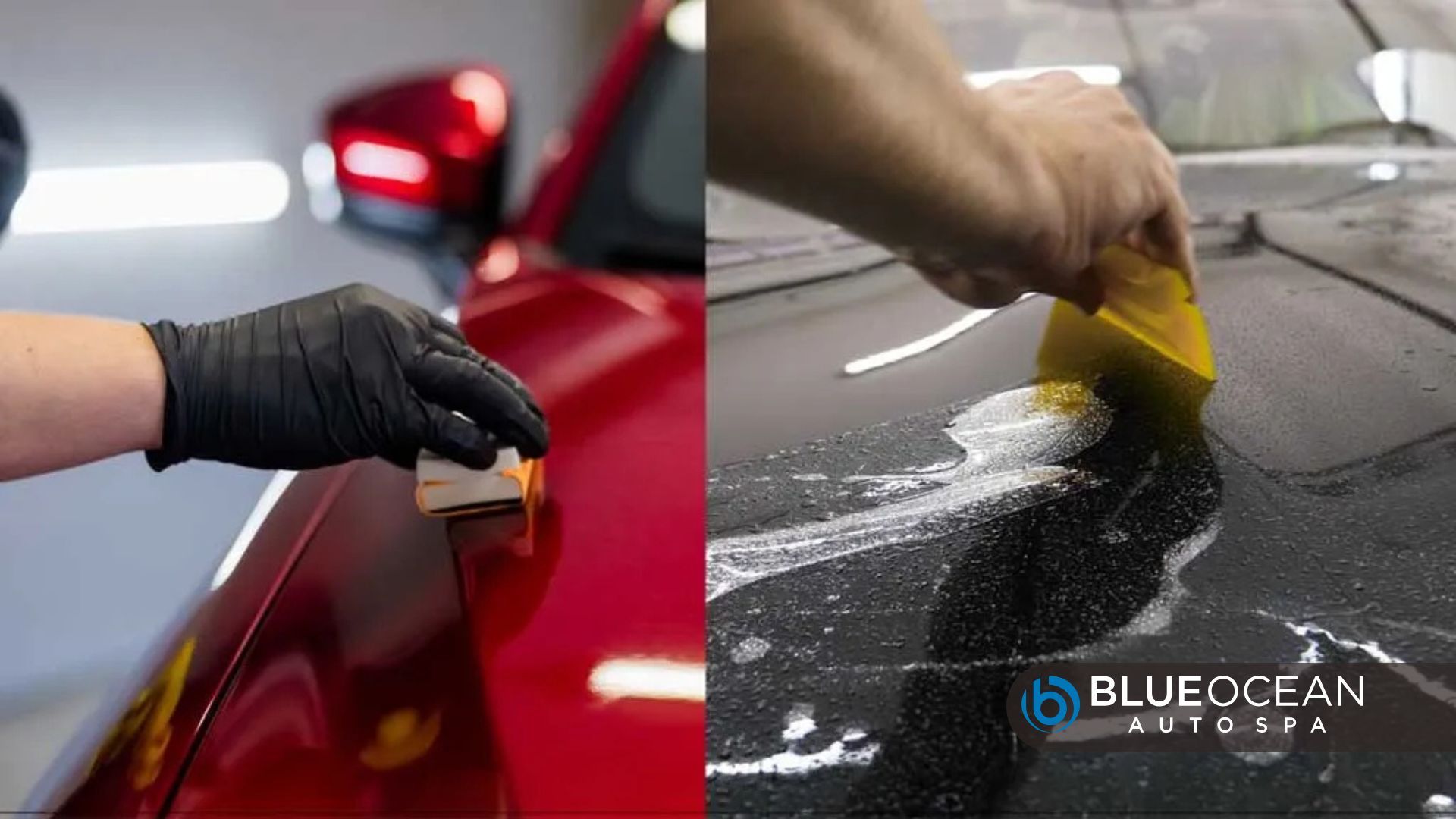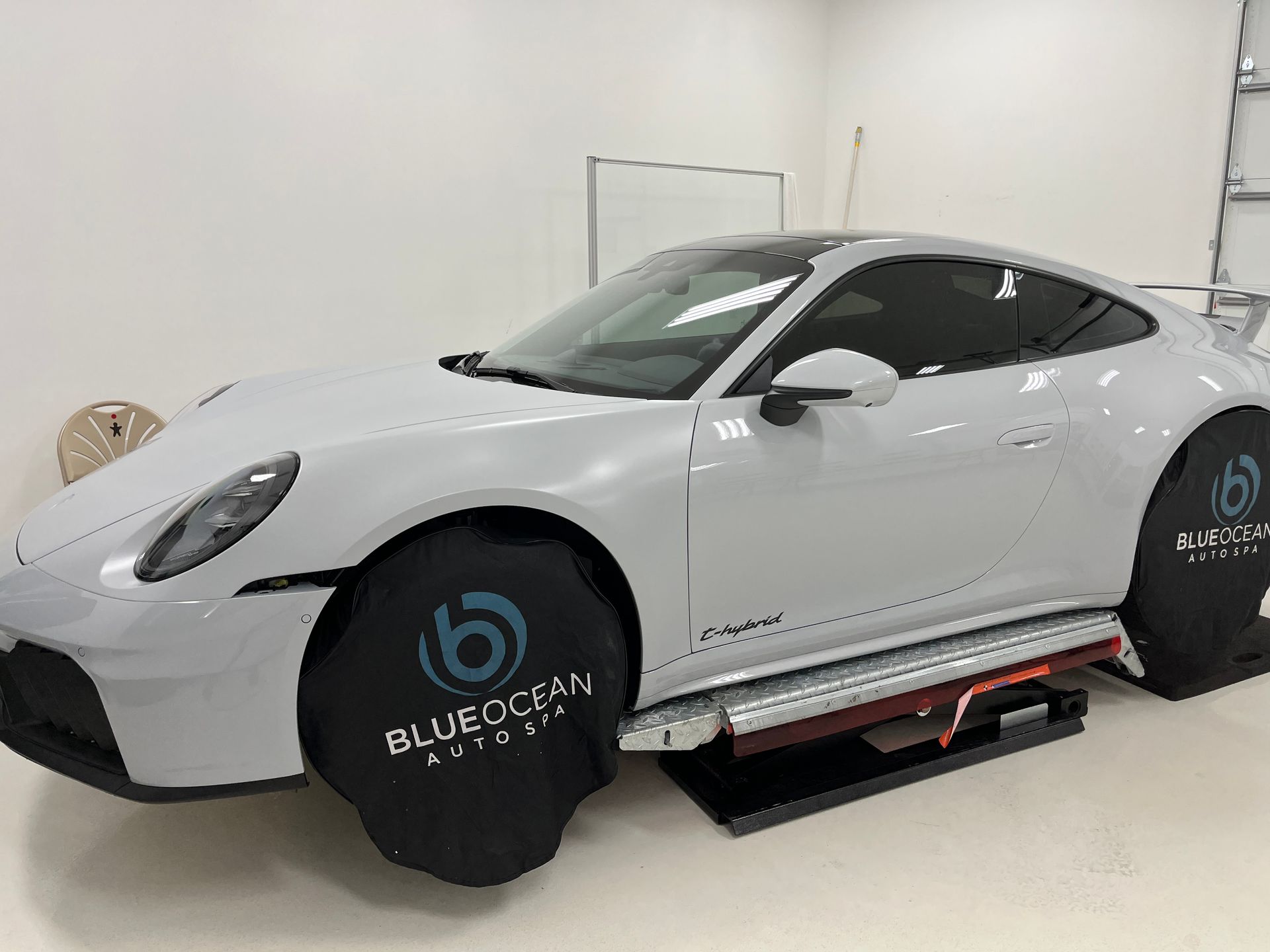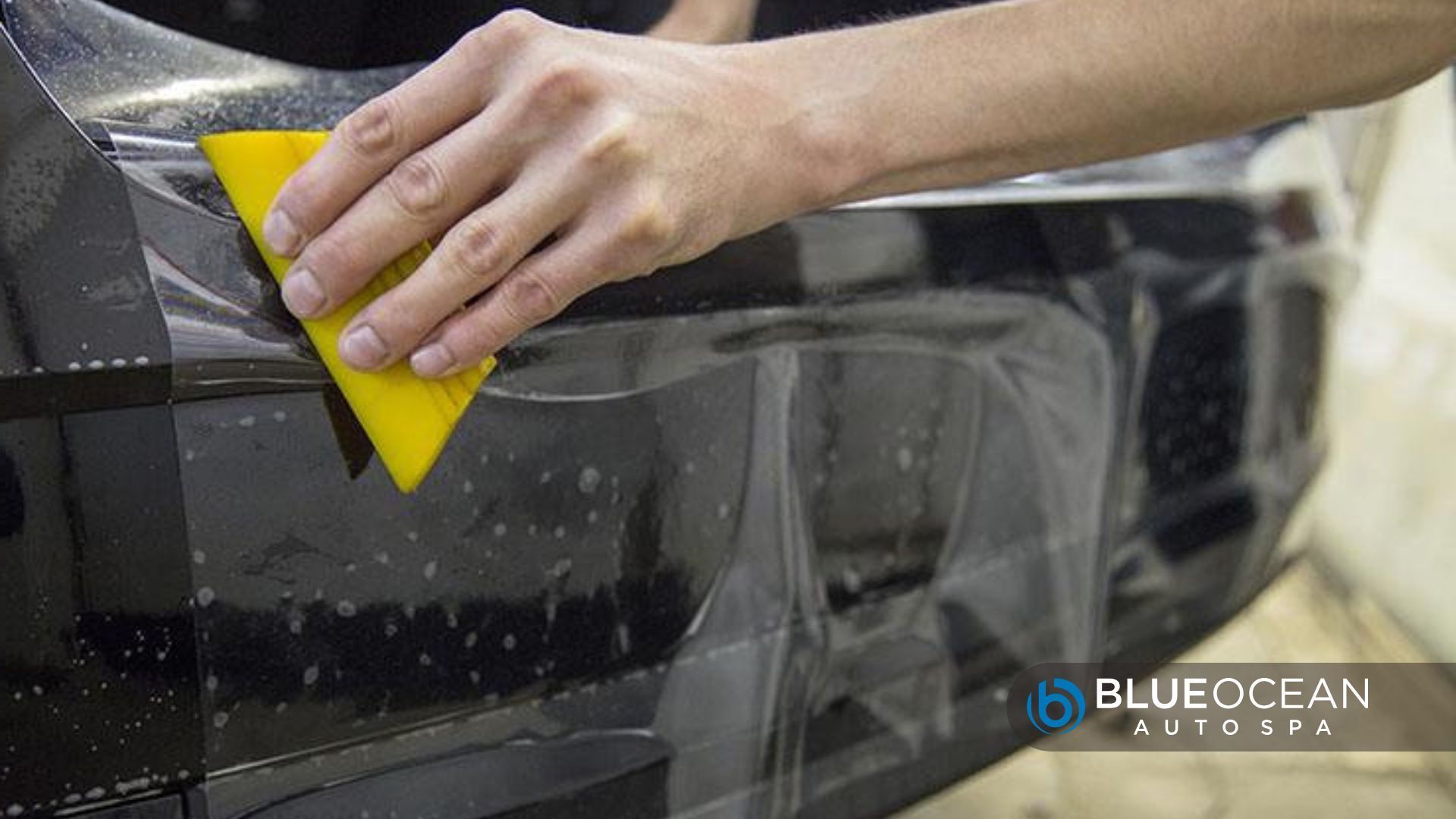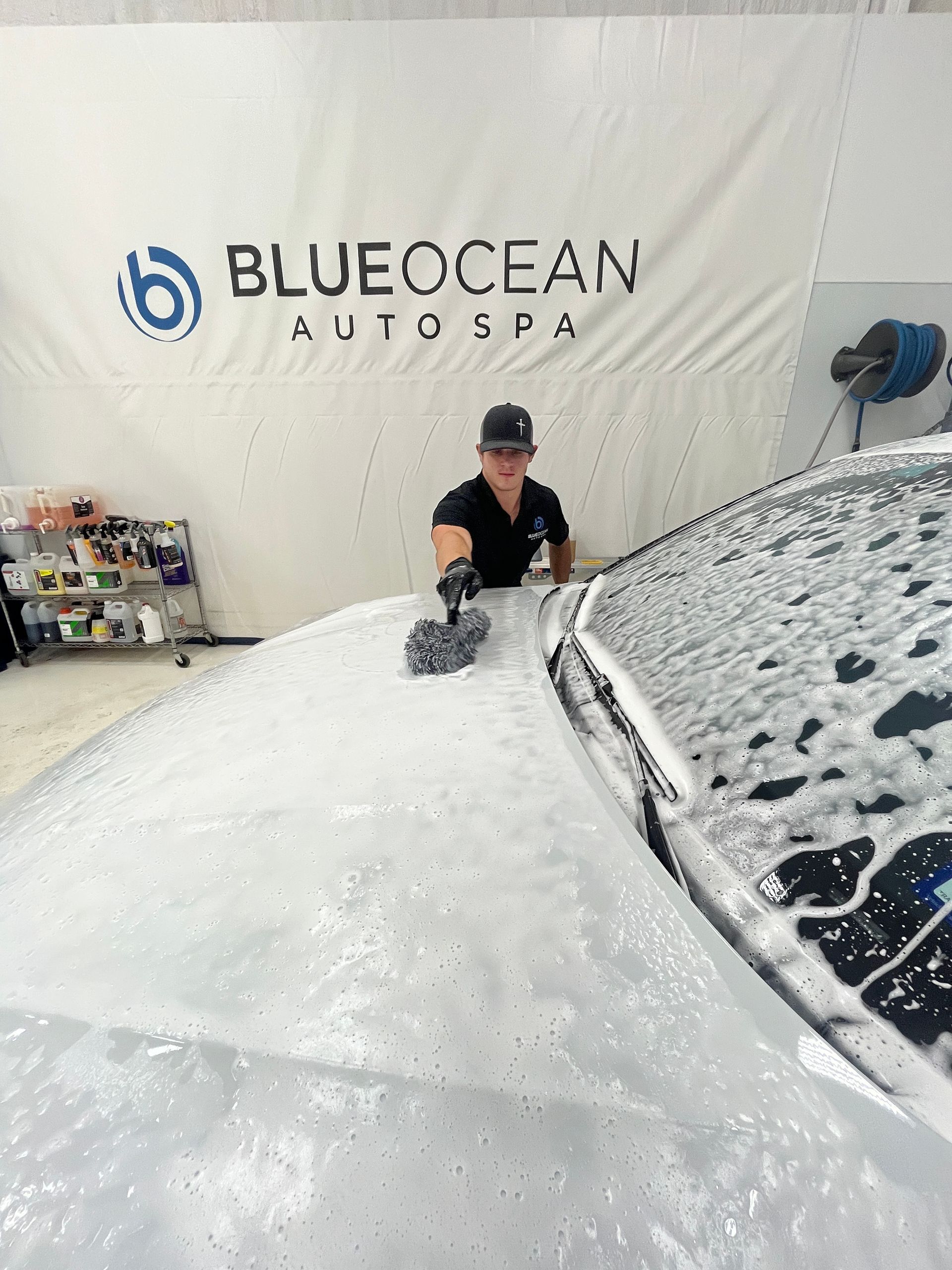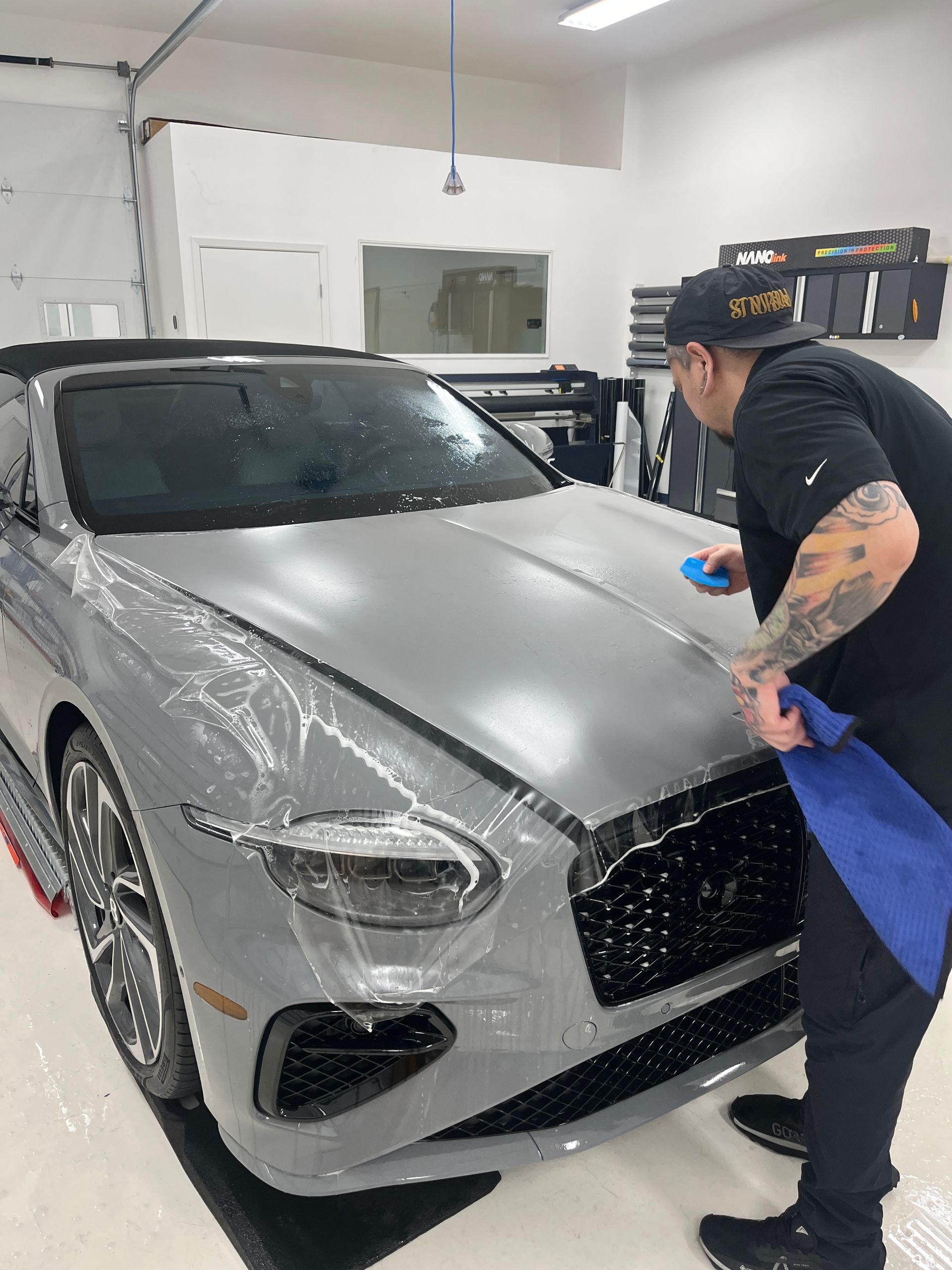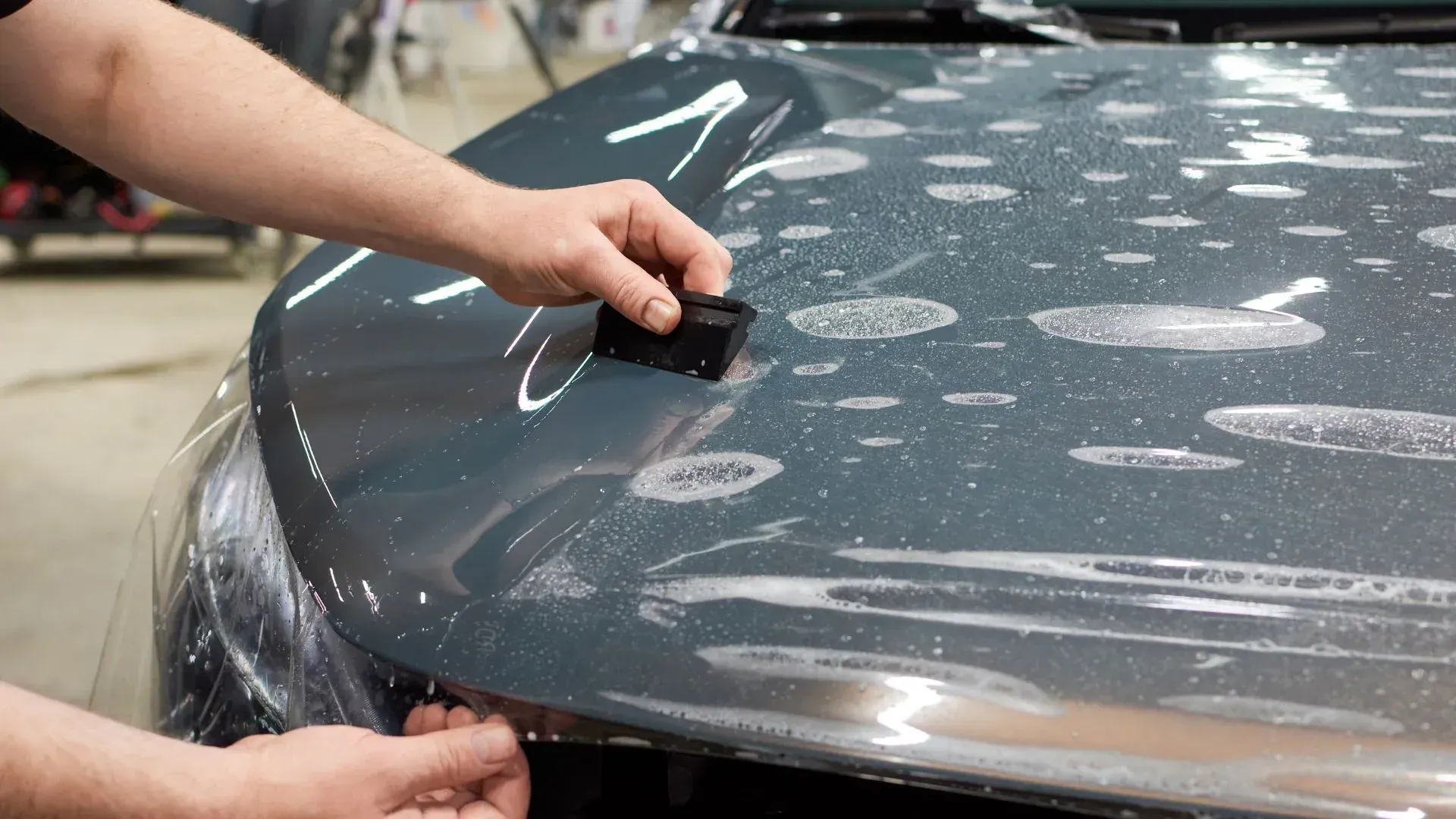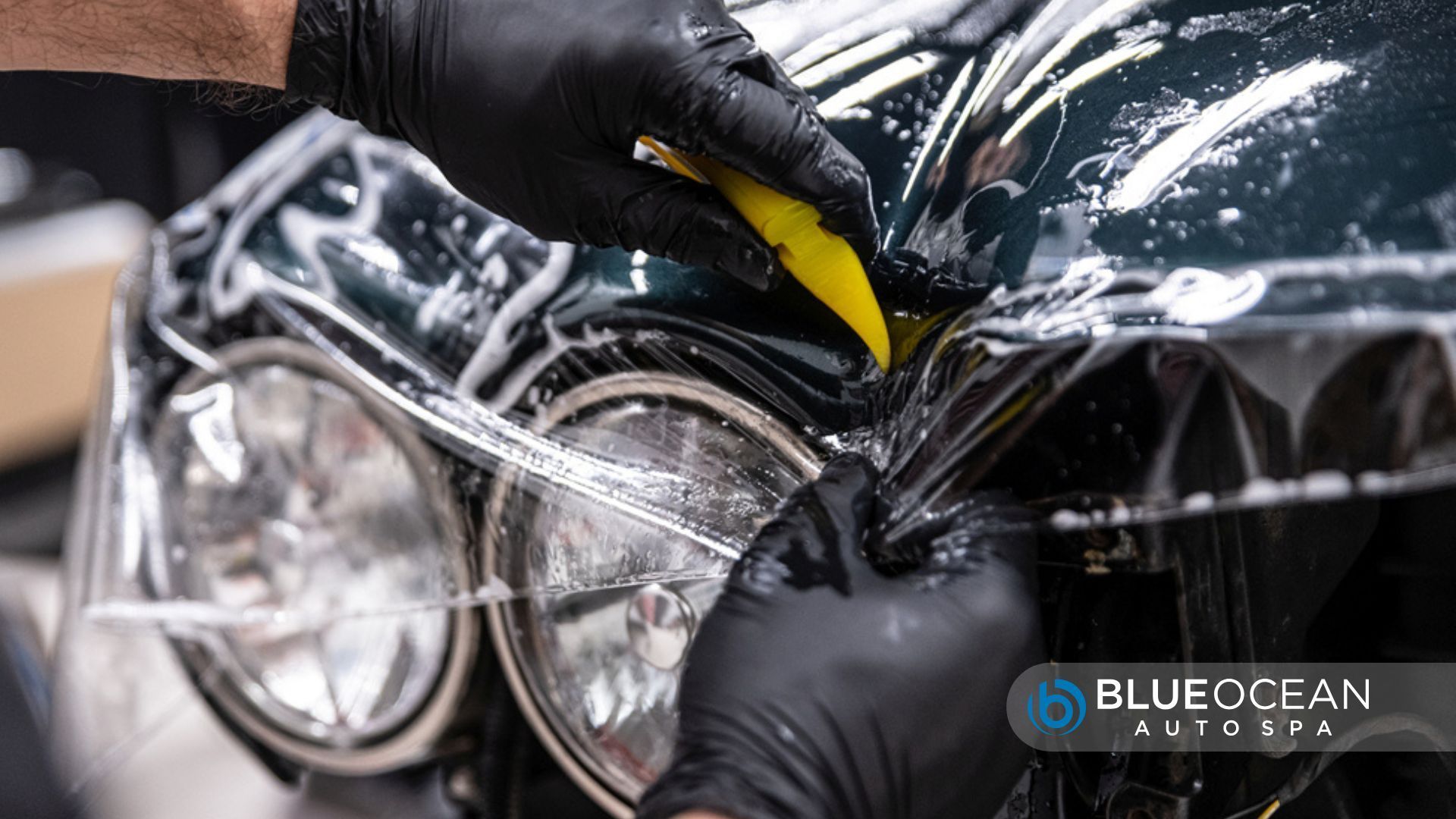Not all window tints are created equal. Ceramic window tint stands out because it offers powerful heat and UV rejection without making your windows too dark or interfering with your devices. Unlike dyed tint, which can fade over time, or metallic tint, which might mess with your GPS or phone signal, ceramic film keeps things cool and connected.
Choosing the Right Ceramic Window Tint Percentage for Texas Heat
If you’ve ever sat in traffic on I-35 or parked under the sun in an Austin lot, you know that Texas heat doesn’t play around. With long summers, high UV levels, and intense glare nearly year-round, having the right window tint isn’t just about looks—it’s about staying cool, protecting your interior, and making your car more comfortable to drive. At Blue Ocean Auto Spa, we’ve seen firsthand how the right ceramic window tint transforms the driving experience. Personally? After sweating through my first summer in Austin with no tint, I swore I’d never make that mistake again.
What Does “Window Tint Percentage” Actually Mean?
When people talk about “tint percentage,” they’re usually referring to VLT — Visible Light Transmission. This number tells you how much visible light can pass through your window. The lower the percentage, the darker the tint. For example:
- 70% VLT
lets in 70% of visible light (a very light tint).
- 20% VLT
only allows 20% through (much darker and more private).
Texas Tint Laws You Should Know
According to the Texas Department of Public Safety:
- Front side windows
must allow
at least 25%
of visible light.
- Back side windows and rear glass
can be tinted darker—there’s more flexibility here.
- A strip of tint is allowed on the top 5 inches of the front windshield, but it must let at least 25% light through.
We always make sure every window tint we install meets state guidelines—and we provide the tint certificate you’ll need in case you’re ever stopped by law enforcement. It’s part of doing things the right way here in Texas.
Why Ceramic Window Tint Is Ideal for Texas Drivers
Here’s why so many Texas drivers choose ceramic:
- Blocks infrared rays, helping your cabin stay significantly cooler—even on 100ºF+ days.
- Reduces glare
without sacrificing visibility, especially important for long drives or nighttime driving.
- Protects your dashboard and upholstery
from fading and cracking.
- Won’t interfere
with Bluetooth, radio, or GPS like some metallic films can.
We see the difference every day. One of our regulars who commutes through San Antonio told us, “Driving through I-35 traffic at 2PM used to feel like sitting in a sauna. With ceramic tint, the difference is night and day.”
If you're tired of blasting your A/C just to survive the drive, ceramic window tint might just be the upgrade your car (and your skin) deserves.
How to Choose the Right Tint Percentage for Your Lifestyle
Not every driver in Texas has the same needs when it comes to window tint. That’s why one-size-fits-all recommendations don’t really cut it—especially when you're dealing with the Texas sun. Here's how we help our clients at Blue Ocean Auto Spa choose the right ceramic window tint percentage based on how and where they drive.
1. Daily Commuters in Cities Like Houston or Dallas
If you spend hours each week crawling through traffic on I-45 or I-30, you know how brutal that afternoon heat can get. For daily commuters, we typically recommend 25% to 35% ceramic tint on the side windows. It gives you solid heat rejection and UV protection without compromising too much on visibility—especially useful when changing lanes or driving at night.
Let’s imagine you're sitting in stop-and-go traffic in 100°F heat after work. Without tint, your A/C works overtime and you still feel the sun beating through the glass. With ceramic tint, your cabin stays cooler and the ride feels far more manageable.
2. Weekend Road Trippers Across West Texas
If you're someone who loves escaping the city for long drives through the Big Bend or Guadalupe Mountains, visibility in the front is key—but rear-seat comfort matters too. That’s why we often recommend a dual setup:
- 25%-30% front windows
- 15%-20% rear windows
This darker rear tint helps minimize glare from the afternoon sun, especially when you're heading west with the sun directly behind you. Another scenario is that you’re cruising toward El Paso or hiking spots near Marfa, and the sun’s intense. With ceramic tint on the back windows, passengers aren’t constantly adjusting visors or squinting through the heat haze.
3. Families with Kids or Pets
4. Luxury Vehicle or Tesla Owners
If you drive a high-end vehicle, you probably care about preserving that pristine interior and keeping your technology working smoothly. Ceramic window tint is the best option here because it:
- Rejects up to
99% of UV rays
- Blocks infrared heat without making windows too dark
- Won’t interfere with GPS, phone signals, or Tesla sensors
At Blue Ocean Auto Spa, we work with premium-grade ceramic films designed for modern cars, including Teslas, Mercedes, and other luxury models. We’ve seen firsthand how this kind of tint not only protects your investment—it elevates your driving experience.
Legal Considerations: Staying Compliant in Texas
Before choosing your ideal tint shade, it’s important to stay on the right side of Texas law. Here's a quick breakdown:
- Front side windows
must allow at least
25%
of visible light in.
- Back side windows and rear windshield
can be much darker—there’s no specific VLT minimum.
- Windshield tinting
is allowed in a strip across the top (above the AS-1 line) and must have a VLT of
25% or more.
Why Proper Installation Matters
If your tint doesn’t meet state requirements, you risk tickets, inspection failures, or being forced to remove the film. That’s why we always:
- Use high-quality ceramic films with
measurable VLT ratings
- Provide a
certificate of compliance
for your glove box
- Stay up to date with
Texas Department of Public Safety guidelines
When you choose Blue Ocean Auto Spa, you’re not just getting quality ceramic window tint—you’re getting peace of mind that it’s done right the first time.
Performance vs Aesthetics: Finding the Right Balance
Installation Matters: Why a Professional Shop Makes a Difference
The quality of your window tint doesn’t just depend on the film—it depends on the installation process. Even the best ceramic tint will fail if it’s installed poorly or rushed. That’s why at Blue Ocean Auto Spa, we focus on:
- Thorough surface prep
to eliminate dust, debris, and oils
- High-grade ceramic films
that are built to last in Texas weather
- Precise application and curing
for clean, bubble-free results
Texas drivers deal with a unique mix of conditions—blazing UV rays, high humidity, and fine dust from open roads. Our team is local, experienced, and knows how to get it right the first time.
It’s not just about looks—it’s about long-term protection that holds up on the road, in the heat, and through all four (very warm) seasons.

Final Thoughts: Making the Smart Choice for Texas Roads
At the end of the day, choosing the right ceramic window tint isn’t just about how your car looks. It’s about protecting your interior, improving comfort, and making smart decisions for the Texas roads you drive every day.
From daily commutes through Dallas to road trips across West Texas, ceramic tint helps cut the heat, reduce glare, and protect the things—and people—you care about.
Still unsure what tint percentage fits your needs? At Blue Ocean Auto Spa, we’ll help you choose the right ceramic film based on how you drive and where. Whether you want better performance, subtle aesthetics, or both, our team is here to guide you.
Reach out today for a free consultation or quote—we’ll help you find the perfect fit for your car and your lifestyle.
Blue Ocean Auto Spa
5.0 ⭐⭐⭐⭐⭐ 92 Google reviews
Car detailing service in Cedar Park, Texas
Address:
1001 Doris Ln, Cedar Park, TX 78613, United States
Phone: +1 512-496-4296
